Exercise Pool
Set of exercises to maintain the fundamental skills required for drawing. Before doing a drawing session, spend 10-20 minutes doing one or several of these exercises.
Lines⚑
-
Superimposed lines: for different increasing lengths (4cm, 8cm, half the width and full width), draw a line with a ruler and repeat the stroke freehand eight times. Also try some arcing lines, and even some waves. Make sure you fray only at the end.
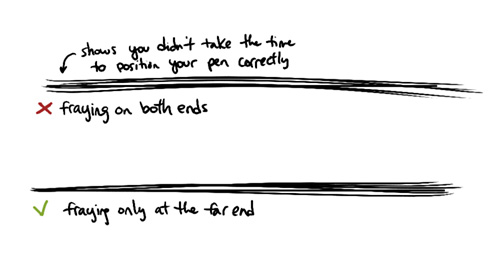
Example:
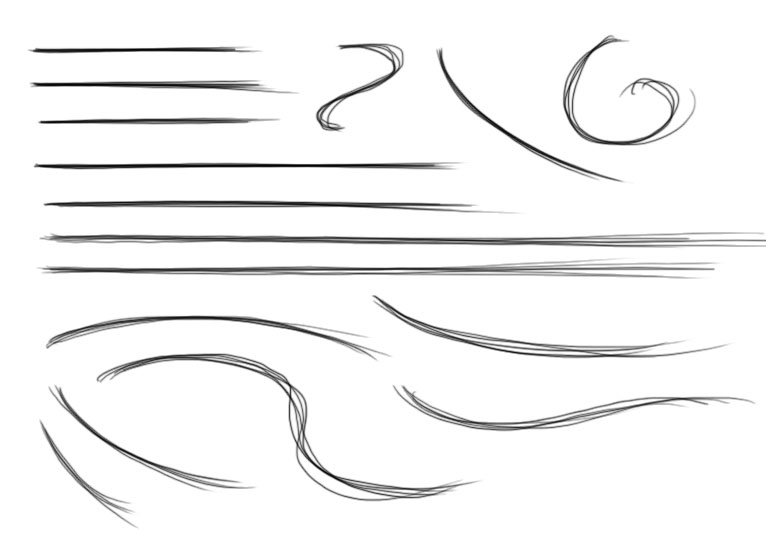
-
Ghosted lines: Fill up a page with straight lines following the ghosting method.
Special things to avoid:
There are several levels of success with this exercise:
- Level 1: Line is smooth and consistent without any visible wobbling, but doesn't quite pass through A or B, due to not following the right trajectory. It's a straight shot, but misses the mark a bit.
- Level 2: Like level 1 and maintains the correct trajectory. It does however either fall short or overshot one or both points.
- Level 3: Like level 2 and also starts at right at one point and ends exactly at the other.
Example:
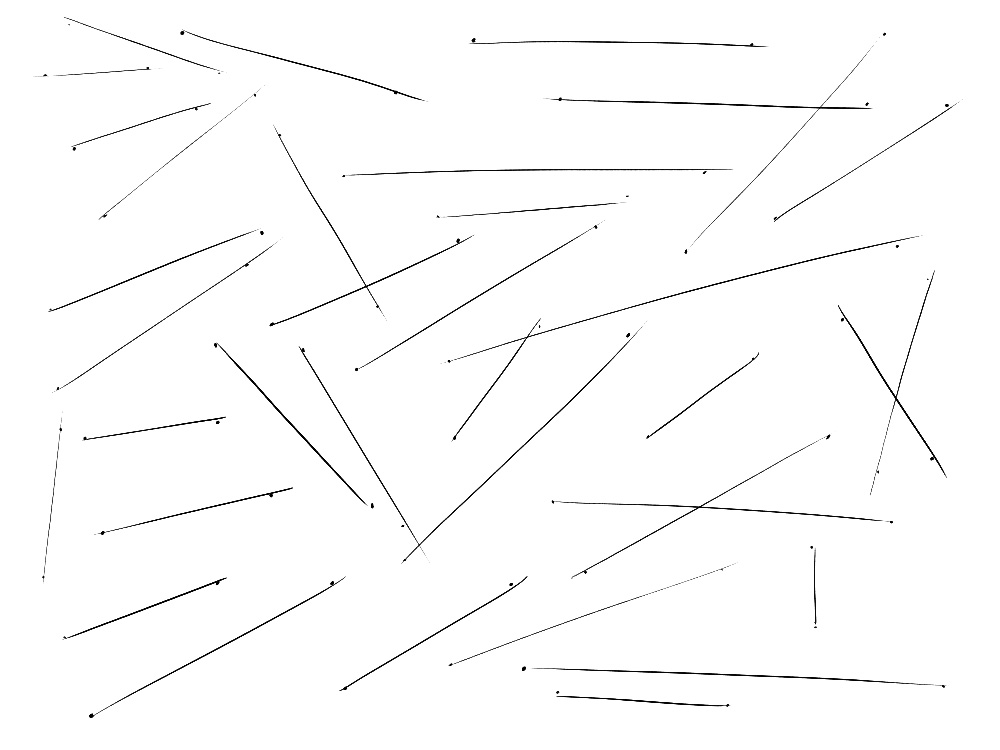
-
Ghosted planes: Fill up a page with planes using the ghosting method. Start with 4 points, join them, then fill in the two diagonals, and then make a cross through the center of the X.
Special things to avoid:
Example:
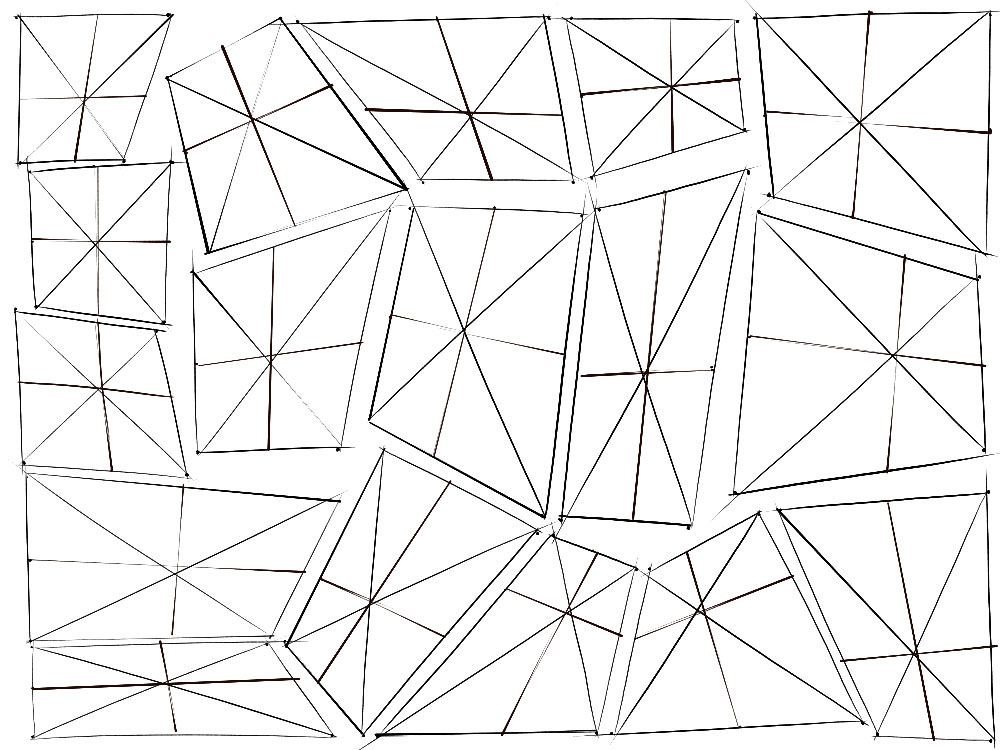
As you repeat the exercise, you can start to envision these planes as being three dimensional rectilinear surfaces. The third and fourth steps, where we construct the diagonals and the cross can be treated as being a subdivision of the plane. The cross will require some estimation to find the center of each edge in space.
Ellipses⚑
Tables of ellipses⚑
This exercise is meant to get you used to drawing ellipses, in a variety of sizes, orientations and degrees. It also sets out a clear space each ellipse is meant to occupy, giving us a means to assess whether or not an ellipse was successful, or if there were visible mistakes (where it went outside of its allotted space, or ended up falling short). Practicing against set criteria, with a way to judge success/failure is an important element of learning. There's nothing wrong with failure - it's an opportunity to learn. Having a clearly defined task allows us to analyze those failures and make the most of them.
Start off by taking your piece of paper and dividing it into a table with two columns and a bunch of rows.

For this one, you draw a circle starting from the far left of the box. Then, draw another beside it. Keep repeating it until you fill in the whole box. Strive to make your circles touch the top and bottom of the box, as well as the line to the left of it.

Next, same idea, but with ellipses. Within the same section, you should aim to draw ellipses of the same degree. You can also play with the angle of the ellipse, and this should also be consistent within the same section.

This one's a little different. Draw a wave through the section, dividing it into irregular pockets of space. Then fill these spaces with circles or ellipses, trying to keep them touching the bounds of the section as well as the curve. Everything should fit in there snugly, and nothing should be floating around.
Things to remember⚑
- Draw confidently: use the ghosting method and "draw through" your ellipses two full times before lifting your pen to achieve a smooth, even shape
- Plan your ellipse: Set out a goal for the ellipse you're about to draw.
- Draw from the shoulder.
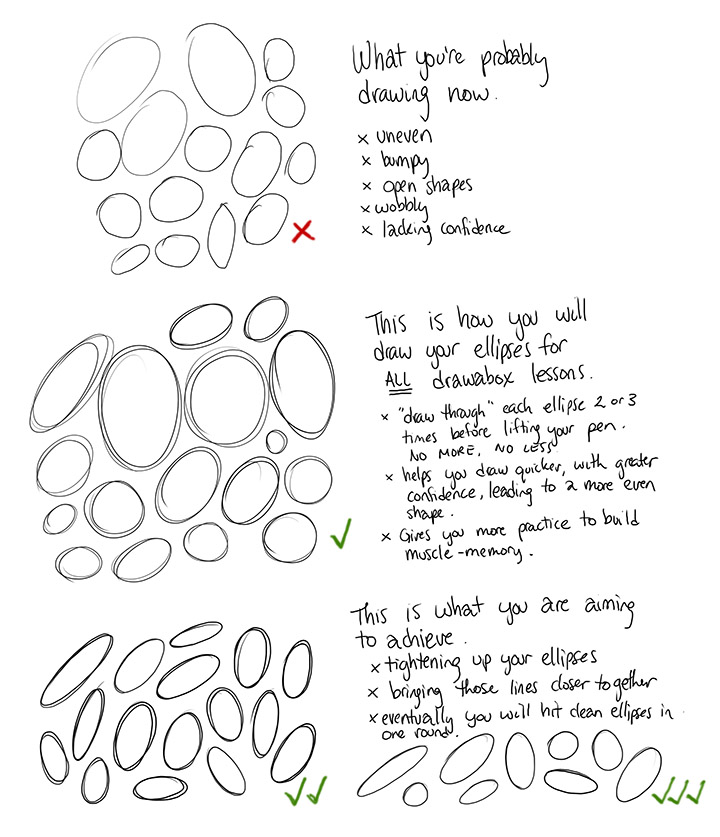
As you get better, your ellipses will tighten up - the gaps between your successive passes will shrink and eventually your ellipses will appear much cleaner.